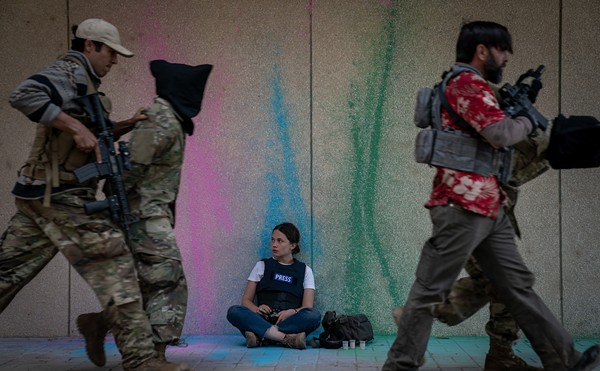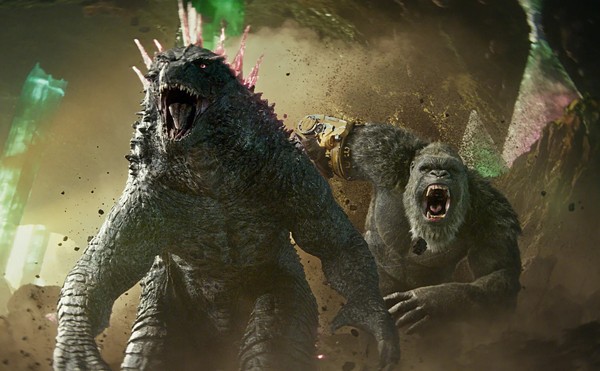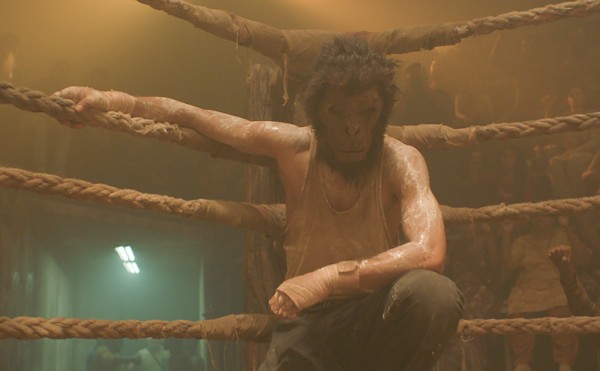First-time feature director James Wan, a veteran of several TV cooking shows, of all things, need not worry. If Saw isn't the scariest horror movie of the year, it's certainly the most brutal. There are no cutaways from violent acts here, no grotesque depravity Wan is afraid to visit upon his characters, and most important, there's no one who's safe from the carnage. In most horror films these days, one need only look at the order in which the actors' names appear on the poster to determine who will be left alive at the end. This inevitably saps the level of suspense -- why fear for a character if you know, more or less, that he or she is likely to prevail? Real scaremongers know, and take to heart, the Joe Bob Briggs Rule for Scary Movies: Anyone can die at any time.
In case it isn't already abundantly clear to you, Saw is not a casual date movie. Many will decry it as excessive or sadistic; cultural conservatives will most certainly deem it abhorrent. Scored by Nine Inch Nails' Charlie Clouser, this is a movie for those who already own the bootleg, uncensored cuts of that band's videos and think Natural Born Killers wasn't sufficiently bloodthirsty. Fans of industrial music finally have a mainstream movie release that represents their Zeitgeist -- even the pig mask occasionally worn by the killer seems to be a reference to the frequent use of the word "pig" in industrial songs, which in turn is inspired by the fact that Charles Manson said it a lot.
Anyway. Two men awaken from unconsciousness in a large, dingy bathroom. They are chained to opposite ends of the room, and between them is the body of a man who has apparently blown his own brains out. The younger of the two men, Adam (screenwriter Leigh Whannell), is a photographer; the older, Lawrence (Cary Elwes), is a doctor. Both have envelopes in their pockets containing microcassettes, and Lawrence's also has a single bullet and a small key. The dead man in the middle of the room has a microcassette player.
Lawrence gradually figures out what's happening. Not long ago, he was interrogated by police as a suspect in a case involving a mysterious maniac known as Jigsaw. Referred to as a serial killer, Jigsaw hasn't actually killed anyone in the literal sense. Rather, he singles out people whom he feels don't properly appreciate life (among them Shawnee Smith, star of Chuck Russell's entertaining 1988 remake of The Blob) and places them in elaborate traps that require either self-mutilation or the murder of another person in order to escape. In the trap at hand, Lawrence learns from the tape that he must kill Adam by 6 p.m., or his wife and daughter will be killed. Adam can protect himself by escaping first, but there's only one apparent way to do that: Use the bone saws provided to cut off his own foot, thereby escaping the thick chain that binds his leg to the wall (a blatant lift from Mad Max).
Although the men remain in the room for most of the film, the narrative frequently jumps back in time, as we learn more about exactly how Lawrence and Adam came to be there, what their connection to each other is, and how one particular cop (Danny Glover) became obsessed with the Jigsaw case. We're given reasons to suspect that any of them might be in on it. And gradually, more clues are found and put together, in the manner of survival horror video games like Resident Evil (a point lost on the makers of the recent Resident Evil: Apocalypse). Pay close attention, though, as the flashbacks aren't necessarily in the linear order they initially appear to be.
Director Wan is fond of using fast-forward motion to convey information quickly, a tic likely picked up from Tool videos, and at times goes into near-subliminal montages that make a good fit with Clouser's NIN sound-alike score. The quick cuts, when they happen, make sense; this isn't another one of those action movies that uses bad editing to cover up worse fight choreography. Wan also isn't afraid of total darkness -- visually, Saw features the least-lit interiors since David Fincher's Panic Room.
Wan gets so much right that it's a shame he slips up in a couple of key areas. The lead actors simply aren't that great, for one thing. Whannell does OK for a first-timer, but he just doesn't yet have it in him to pull off a lead role, especially an emotionally grueling one. Elwes is better, but not by much. Both manage to pull things together for the climax, but their ability seems to fade in and out several times prior.
As to the climax -- without spoiling, let's just say it depends upon something rather implausible. It's stretching, but possible, to believe in a villain so utterly brilliant that he can anticipate everything -- even the parts of his plan that may go wrong and require double or triple fail-safes. Toward the end, though, he does something that strains believability past the breaking point. It probably won't matter until you start thinking about it afterwards, but if this thing becomes a franchise, let's demand more logic for the sequel.





